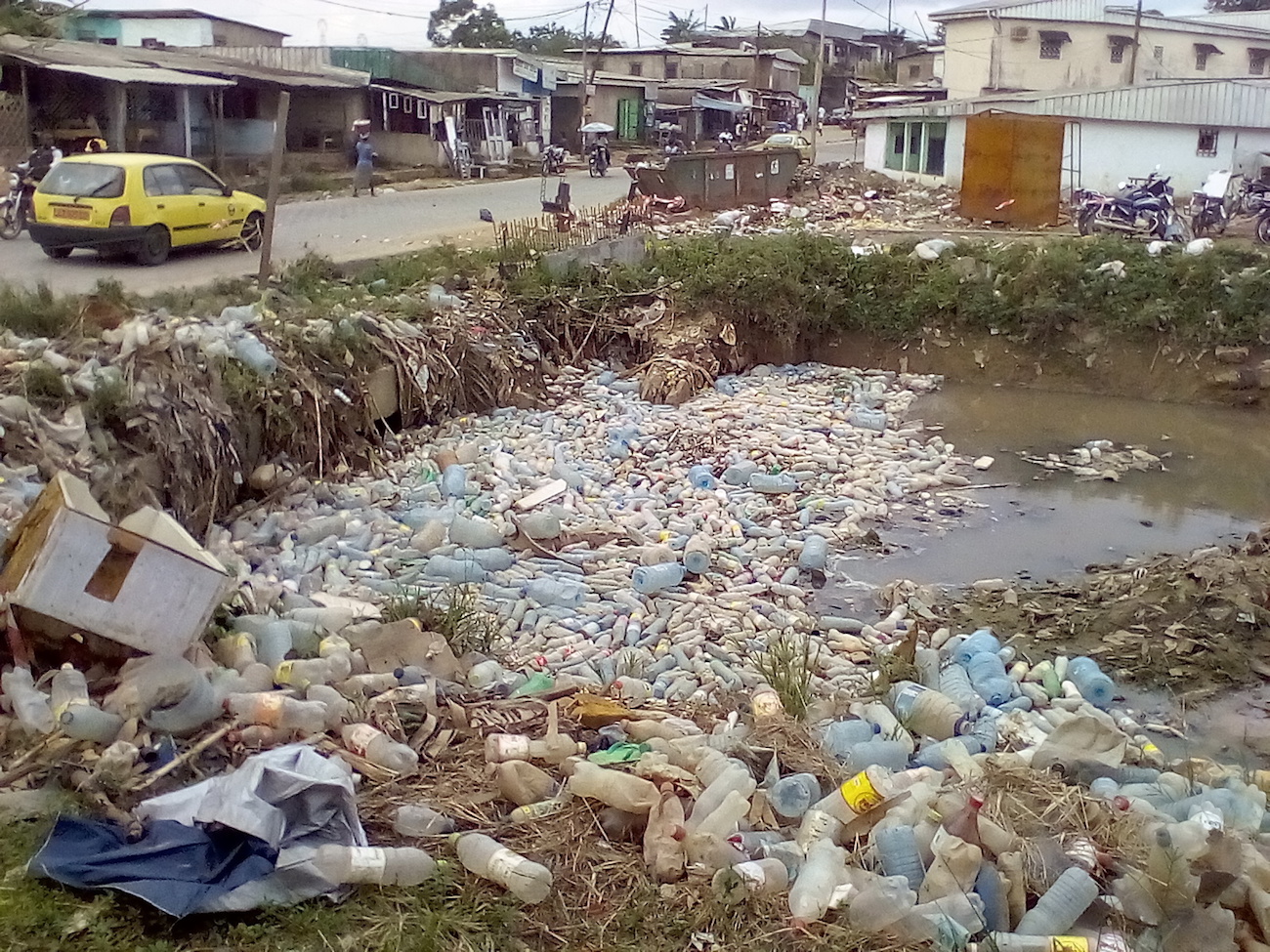In Cameroon, plastic bottles, plastic bags, old rubber tyres, end of lives energy saving bulbs, and glass thermometers are frequently and carelessly dumped either on unused land or in water ways, with the risk of transportation to other waterbodies such as lakes or rivers. To eliminate this visual pollution, people living near these spontaneous dumping sites often turn to open burning of waste, with consequences for both ecosystems and human health.
The Centre of Research and Education for Development (CREPD) in Cameroon, with support from GEF SGP Cameroon, organized an information workshop that brought together representatives of community-based organisations and NGOs, local administrations, traditional authorities, waste managers, and private sector industries in order to discuss the environmental and health impacts of chemicals, as addressed by international conventions and their relevance in the local context.
 See beyond just plastics and discarded articles
See beyond just plastics and discarded articles
During the information workshops held in Douala and Edéa in January 2017, the beneficiary populations were educated on the hazards of burning waste and that chemical compounds like lead, mercury, and POPs are released into the natural environment as a result of improper handling and substandard recycling. Chemical leaching into the environment can eventually wind up in the food we consume. The participants realized how the various global conventions on chemicals and waste have direct relevance for them at the local level.
Information workshops at the grassroots level simplifies and makes the available information laid out in the global environmental policy frameworks such as the Stockholm Convention, the Basel Convention, the Minamata Convention and the Strategic Approach to International Chemical Management (SAICM) accessible to laypeople. This often generates positive and actionable feedback from the local level, which can contribute to strengthening global policy and its implementation at the local level.
As a result of the workshop discussions, a question emerged from the participants: “Why are we not informed enough of the presence of these toxic chemicals in these products?” A possible answer to this question is that if information on hazardous chemical compounds in products is made available in simplified packaging and shared widely, waste management at the local level could have been different.
This workshop can inform the ongoing negotiations on the future of SAICM
The results of this workshop can feed in the current discussions about the governance of Strategic Approach to International Chemical Management (SAICM) beyond 2020. Transparency on hazardous chemicals compounds in chemicals products, articles, and packaging products is crucially needed to achieve the sound management of chemicals and wastes in developing countries. Additionally, a legally binding protocol should be considered beyond 2020, to effectively address the issue of transparency on chemicals in products.
Authors: Kuepouo Gilbert, Centre de Recherche et d'Education pour le Développement, (CREPD), Kamga Fogué Aimé, GEF SGP Programme Assistant, CAmeroon, and Mpeck Nyemeck Marie-Laure, GEF SGP National Coordinator, Cameroon




